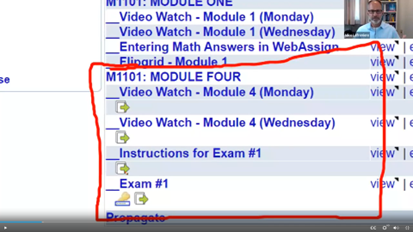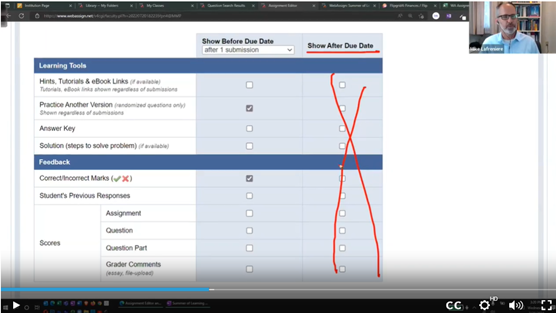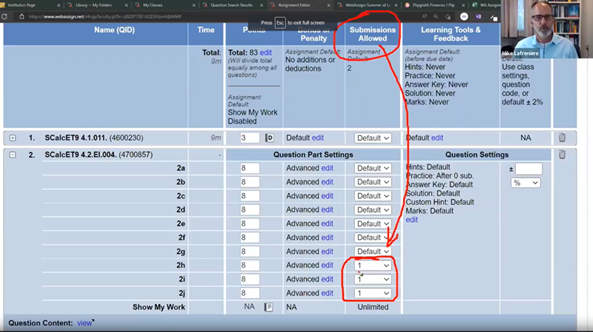Exams are stressful for students and instructors. As an instructor, you not only need to choose the exam topics, but prepare students for the test, deliver the exam securely and prevent cheating. Professor Mike Lafreniere from Ohio State University uses a unique strategy to deliver secure WebAssign exams with a modular design. Explore his strategy in this post and watch the full webinar for more detailed explanations.
Modular Design for Exams

Professor Lafreniere uses a modular design to effectively prepare students for the exam. He creates multiple required assignments to be completed in the week leading up to the exam to ensure students are ready.
Each assignment leading up to the exam is very short and outlines essential information that students should understand prior to entering the exam. Students will need to acknowledge they’ve read the information in each question before they move on to the next assignment.
The assignments are also gated by password protection or conditional release which requires students to complete one assignment and achieve a score before entering the next one. You can design your modular exam with any information you think is necessary for students to know. These are the assignments Professor Lafreniere included.
Assignment 1: Introduction to the Modules
Professor Lafreniere requires students to complete this three-question assignment called Module Four, which introduces students to the modular design and provides valuable instructions on what they’re required to complete before the exam.
Professor Lafreniere also includes information on the topics and sections covered in the exam, so the students know how to study effectively. Once the student completes the assignment, the next module will open.
Assignments 2 & 3: Video Assignments
Within the modular design, Professor Lafreniere assigns two assignments with videos for students to watch. The videos go over past assignments to further prepare students for the exam and include questions to make sure students watch the videos. Like the previous assignment, once students watch the videos and complete the assignment, the next one will open.
Assignment 4: Exam Instructions
The last thing students need to read and acknowledge before the exam is the instructions. This is the most important assignment for students because it includes key information such as:
- Amount of time allotted for the exam
- Number of submissions or attempts students have for the exam
- Honor code question to ensure students acknowledge they won’t cheat on the exam
- Password for the exam
Assignment 5: The Exam

The final assignment in the modular design is the exam itself. By now, students will be fully prepared to take the exam and will have the password from the Exam Instructions assignment to complete the test.
Tips for Preparing Your WebAssign Exam
Now that you can visualize how to deliver the exam to students, consider these tips from Professor Lafreniere to help you create a secure, effective exam in WebAssign. These include:
Hide Help Tools in Your Assignment Settings

Professor Lafreniere hides all help tools and feedback until after the due date. A good reminder—”before the due date” typically means ”during the test.”
Check Your Question Settings for Multiple-Choice Questions

If you allow multiple submissions on your exam assignment settings, make sure you edit the question settings for multiple-choice questions to only allow one attempt. This will ensure students can’t continue to try the question until they select the correct multiple-choice option.
Question Pools: Question pools are a great way to reduce academic dishonesty by giving students a set number of questions from a group. Be sure to select questions that are of the same difficulty for each pool. You can view the difficulty by the time it takes students to complete it, or by previewing the question and looking at the difficulty.
Final Thoughts
Before beginning your exam, outline your goals and think about how to effectively design your exam to accomplish them. You have a number of features available to you in WebAssign, you just need to know what you’re trying to achieve and the settings available.
Dig deeper into these topics and improve your WebAssign exam design by watching the webinar recording.

